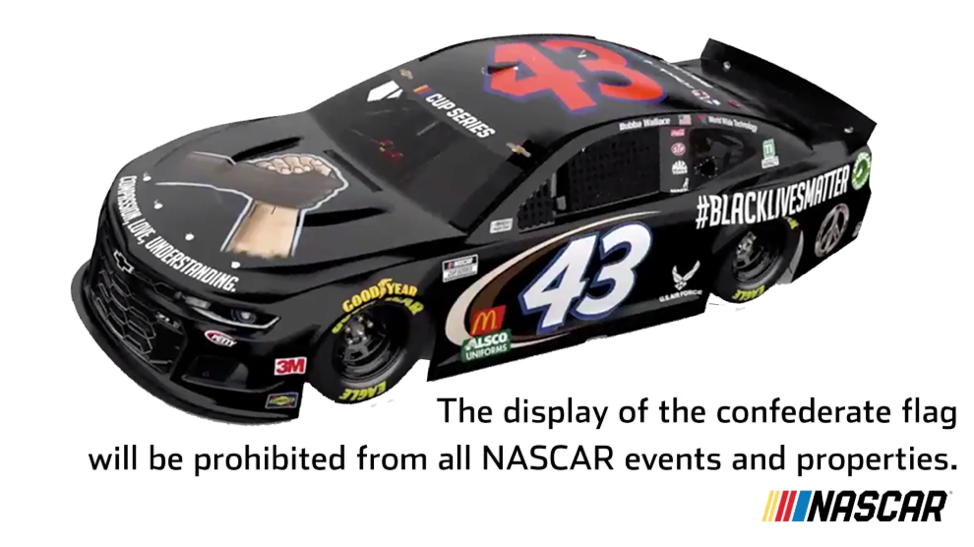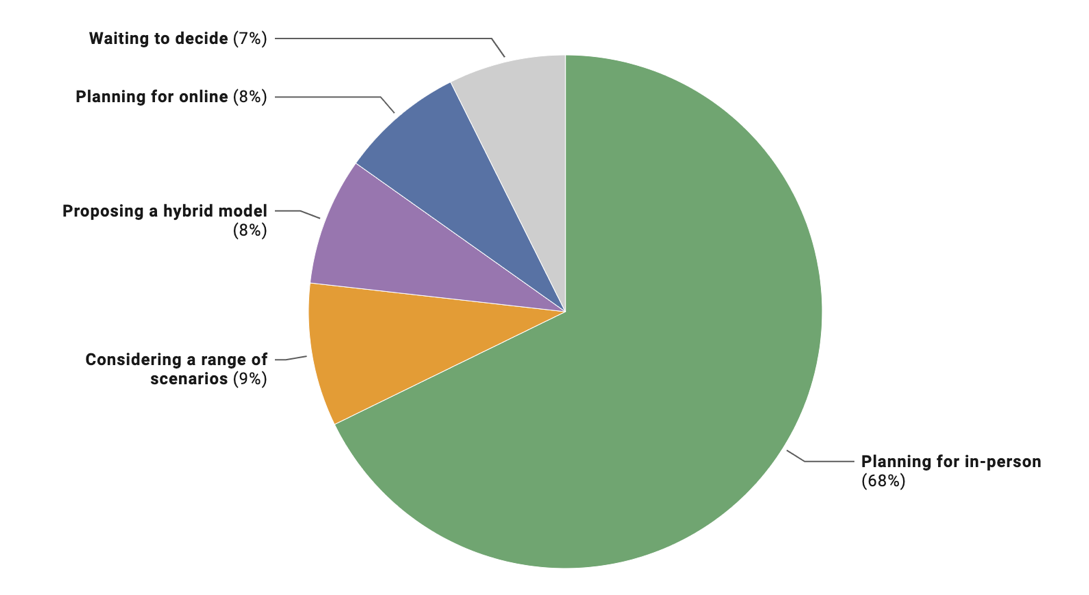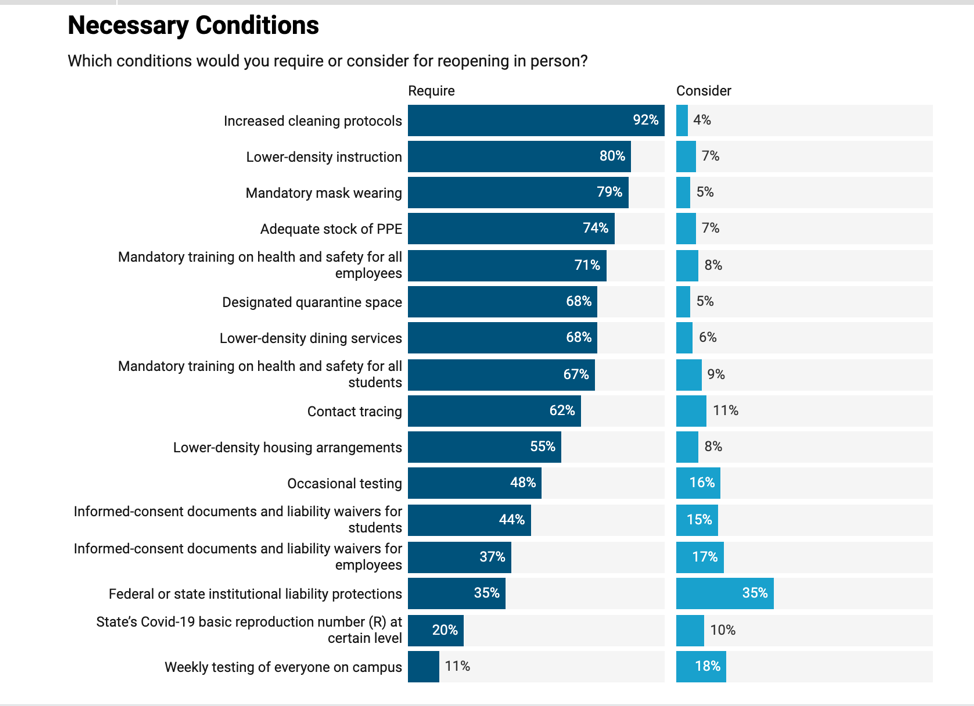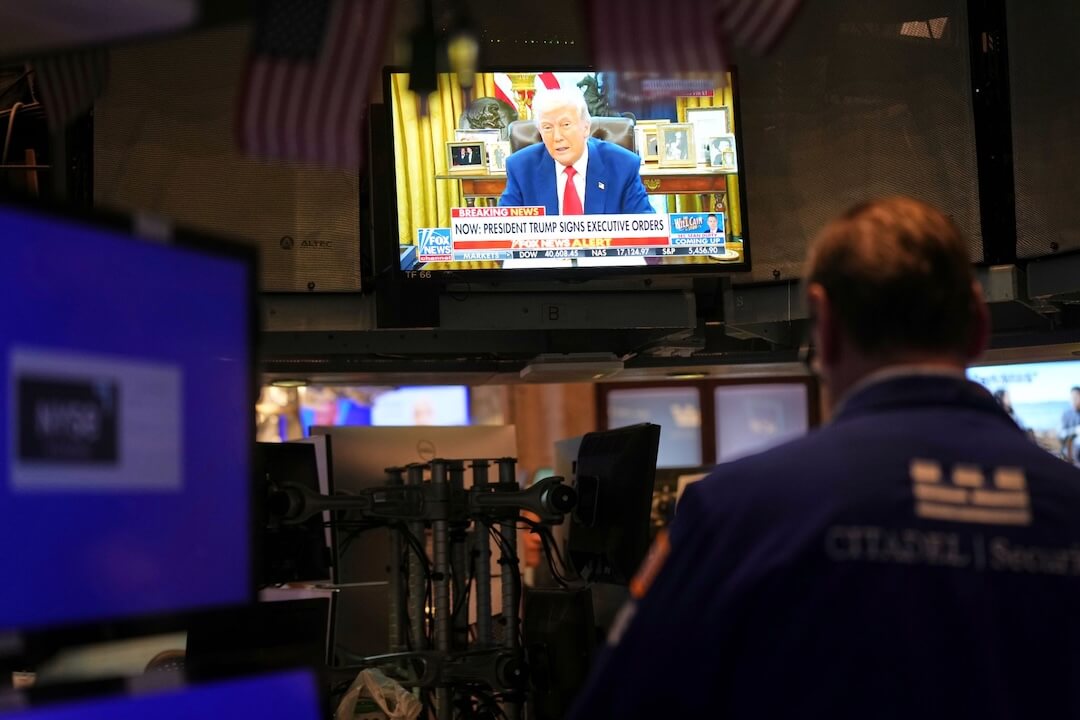 Covering COVID-19 is a daily Poynter briefing of story ideas about the coronavirus and other timely topics for journalists, written by senior faculty Al Tompkins. Sign up here to have it delivered to your inbox every weekday morning.
Covering COVID-19 is a daily Poynter briefing of story ideas about the coronavirus and other timely topics for journalists, written by senior faculty Al Tompkins. Sign up here to have it delivered to your inbox every weekday morning.
Make no mistake about it, the motion picture industry is not just a Hollywood thing. One look at this interactive map and you will start to see how the movie production industry affects nearly every state. Some in huge ways.
So, as production begins again, even in a limited way, it could have implications wherever you are.
The Alliance of Motion Picture and Television Producers published a white paper outlining some of the changes that studios are making to keep everyone as safe as possible. The guidelines point out that “fight scenes and intimate scenes increase the risk of transmission,” so studios should consider changing scripts or using special effects to allow actors to keep their distance from each other.
The studios are shying away from live audiences, auditions will be remote or through plexiglass when in person and there are lots of precautions for makeup and hair artists who have to get close to the actors to do their work.
The Motion Picture Association said the industry employs “2.5 million people — from special effects technicians to makeup artists to writers to set builders to ticket takers and more,” and, combined, they earn over $181 billion in wages annually. It explained how shoots contribute to local economies:
When a movie or television show shoots on location, it brings jobs, revenue, and related infrastructure development, providing an immediate boost to the local economy. Our industry pays out $49 billion per year to more than 280,000 businesses in cities and small towns across the country — and the industry itself is comprised of more than 93,000 businesses, 87% of which employ fewer than 10 people. As much as $250,000 can be injected into local economies per day when a film shoots on location. In some cases, popular films and television shows can also boost tourism.
The Motion Picture Association gives some specific numbers for states (the data is a couple of years old) and mentions places you might not think of as movie production hot spots, including New Mexico, Ohio and Pennsylvania.
In Georgia, the film and television industry directly employs 25,700 people and pays more than $1.7 billion in wages. There are over 2,700 motion picture and television industry businesses in Georgia, including 1,822 production-related companies. The production of Selma spent $470,000 on in-state wardrobe purchases, dry cleaning and laundry. The film also purchased $180,000 worth of lumber, hardware, and other supplies. Popular TV shows like “The Walking Dead” bring tourism to the area when fans flock to see filming sites.
In Hawaii, the film and television industry directly employs over 2,200 people and pays more than $100 million in wages, and was a location for productions like “Jurassic World,” “Hawaii Five-O,” and “Snowden.”
In Illinois, the film and television industry directly employs more than 19,000 people and pays over $1 billion in wages. Recent movie productions in the state include “Barbershop: The Next Cut” and “Southside with You,” and TV series “Empire,” “Chicago Fire,” and “The Girlfriend Experience.”
In New York, the film and television industry directly employs nearly 90,000 people, including over 53,000 production-related jobs, and pays more than $10.4 billion in wages.
In Massachusetts, the film and television industry directly employs more than 9,900 people and pays over $574 million in wages.
It is also worth pointing out that because so many states offer tax incentives to the motion picture industry, the real effect may be less than the industry claims, although some states claim the breaks attract way more than they cost.
[the_ad id=”667826″]
The wider implications of removing ‘Gone With the Wind’ from HBO Max
This week, HBO Max removed “Gone with the Wind” from its library and said the 1939 film was:
… a product of its time and depicts some of the ethnic and racial prejudices that have, unfortunately, been commonplace in American society.
These racist depictions were wrong then and are wrong today, and we felt that to keep this title up without an explanation and a denouncement of those depictions would be irresponsible.
HBO said when the film is returned, “it will return with a discussion of its historical context and a denouncement of those very depictions.” The film will not be altered because that would “be the same as claiming these prejudices never existed.”
HBO’s decision to pull “Gone With the Wind” off the shelf for a time was a response to a Los Angeles Times editorial written by John Ridley, the Academy Award-winning screenwriter of “12 Years a Slave.” He wrote:
Let me be real clear: I don’t believe in censorship. I don’t think “Gone With the Wind” should be relegated to a vault in Burbank. I would just ask, after a respectful amount of time has passed, that the film be re-introduced to the HBO Max platform along with other films that give a more broad-based and complete picture of what slavery and the Confederacy truly were. Or, perhaps it could be paired with conversations about narratives and why it’s important to have many voices sharing stories from different perspectives rather than merely those reinforcing the views of the prevailing culture.
Currently, there is not even a warning or disclaimer preceding the film.
I know taking down a film — particularly a classic Hollywood film — seems like a big request. But it’s not nearly as big a demand as when your children ask whether they can join protests in the streets against racial intolerance, or when they come to you wanting to know what you did to make the world a better place.
At a moment when we are all considering what more we can do to fight bigotry and intolerance, I would ask that all content providers look at their libraries and make a good-faith effort to separate programming that might be lacking in its representation from that which is blatant in its demonization.
You could see where this could and maybe should go.
How many Westerns could use some historical perspective in the way they portray Native Americans? What would this mean to war films from every era? Would we go beyond racism to address gender roles and equality? What about mob films that portray ethnic and racial groups as dangerous and violent?
Pick a decade and a different race or ethnicity would be able to make a claim that the movies make them look horrible.
Predictably, there has been some blowback already. Megyn Kelly used the word “censor” even though Ridley went out of his way to ask that “Gone With the Wind” not be censored or changed, but instead surrounded by some context.
For the record, you can loathe bad cops, racism, sexism, bias against the LGBTQ community, and not censor historical movies, books, music and art that don’t portray those groups perfectly. Ppl understand art reflects life… as we evolve, so do our cultural touchstones.
— Megyn Kelly (@megynkelly) June 10, 2020
Not only do some movies, music and art not capture groups “perfectly,” some are so far from perfect they are fantasies that pose as reality.
This week the long-running TV show “Cops” was canceled. The show was about to begin its 33rd season. The Hollywood Reporter said:
A&E also pulled last week’s episodes of “Live PD” — which also follows officers on patrol, albeit in real time. A source told THR that new episodes Friday and Saturday are “unlikely,” although A&E is still evaluating things. A spokesperson for Discovery’s ID channel says its similar show, “Body Cam,” is also off the schedule for the foreseeable future.
My friend, NPR TV critic Eric Deggans, tweeted:
As a media critic who slammed COPS as exploitive for 15 years, has denounced stereotyping of The Bachelor/Bachelorette, complained about police deified by TV cop dramas, I toggle between gratitude people finally getting it and anger that some are acting as if this is a new thing. pic.twitter.com/U3RhR0PcZt
— Eric Deggans at NPR (@Deggans) June 10, 2020
Why should this new awareness remain in the genre of film? Music, literature and other media might all benefit from circumspection.
How would you imagine all of this would play out in the best way? Would there be pages in the front of the book in “The Adventures of Tom Sawyer” explaining the historical context of the racist words and attitudes that prevailed when Mark Twain wrote it? Should there be some material at the start of a John Wayne film explaining his views toward Native Americans?
And if we are going to leave a public sculpture of a Confederate general on display, do we owe it to history to attach a plaque explaining his racist history? Expand the conversation far enough to make you uncomfortable, and consider how an unvarnished historical context would address statues, monuments and Mount Rushmore homages to Thomas Jefferson and George Washington.
As a journalist, I find it hard to oppose more context. But let me put a stake in the ground. However the arts (whether it be movies, music, painting, photography, drama, books or dance) respond to this overdue call for contextual awareness, it must be a voluntary response. Any attempt to impose it will shut it all down. (See Tipper Gore’s attempt to label lyrics.)
I would hope that if HBO fulfills its vision by adding historical context materials for “Gone With the Wind,” it would create a new interest in what the film shows and doesn’t show. I would hope that it starts a new conversation that leads to a deeper understanding about the roots of America’s racism.
Today, we have in front of us a single ask to pull one movie off the shelf and to restock it once it can be wrapped in some context. That’s a small idea that should grow.
NASCAR banned Confederate flags
I suspect there will be a lot to say and hear about this today. It has been a long time coming, but NASCAR drivers said they are behind a total ban of Confederate flags at NASCAR events.
NASCAR was formed in 1948 in Daytona Beach, Florida. Its origins are rooted in fast cars outrunning police and federal agents during the days of Prohibition. In the decades that followed, Confederate flags adorned everything from clothing to infield campers at NASCAR events.
Five years ago, NASCAR “requested” fans “to refrain from displaying the Confederate flag” at its events. Associated Press sports writer Dan Gelston pointed out:
Five years ago, the flag issue was front and center for NASCAR after nine black churchgoers were slain in Charleston, South Carolina. The man currently on death row for the murders, Dylann Roof, had embraced Confederate symbols before the attack, prompting a reappraisal of the role such symbols play in the South.
The NASCAR chairman at the time, Brian France, said the series was “working with the industry to see how far we can go to get that flag to be disassociated entirely from our events.” Tracks offered to exchange Confederate flags for American flags, but there were few takers and flags have continued to be seen at the events.
Starting this weekend, NASCAR’s tone changed. Before the race in Atlanta this weekend, 40 cars took their warmup laps and then were called to a halt before the race began. NASCAR president Steve Phelps delivered a message over crew radios, saying:
“Our country is in pain and people are justifiably angry, demanding to be heard. The Black community and all people of color have suffered in our country, and it has taken far too long for us to hear their demands for change. Our sport must do better. Our country must do better.”
He added:
“We ask our drivers … and all our fans to join us in this mission, to take a moment of reflection, to acknowledge that we must do better as a sport and join us as we now pause and take a moment to listen.”
NASCAR’s first Black driver since 1971, Bubba Wallace, said Monday that it was time for NASCAR to ban Confederate flags from all NASCAR events.
Two days later, it happened. The “request” is now a ban.
Wallace’s team rushed to produce a newly painted car with the logo “Black Lives Matter” on the hood and rear panels for Wednesday night’s race at Martinsville, Virginia.

(Richard Petty Motorsports)
NASCAR fans lean about two-to-one Republican. About 91% of NASCAR fans are White. Their average age is 58.
A number of Southern states have tried unsuccessfully to remove the Confederate flag from state license tags.
 Mississippi still includes the Confederate flag as part of its state flag but, this week, some lawmakers were making moves to change that, too.
Mississippi still includes the Confederate flag as part of its state flag but, this week, some lawmakers were making moves to change that, too.
A bipartisan group of Mississippi lawmakers, with the blessing of Speaker of the House Philip Gunn, began whipping votes and drafting a resolution on Monday to change the state flag, which was adopted in 1894 and is the last in the nation containing the Confederate battle emblem.
The conversation behind closed doors this week marks one of the first earnest legislative discussions about changing the state flag since the 2001 referendum in which Mississippians voted nearly 2-to-1 to keep the current flag.
[the_ad id=”667872″]
Summer melt — the June 2020 fear of colleges and universities
The phrase “summer melt” is a familiar one around universities. It refers to the percentage of college freshmen who accept an offer to attend a school and then go elsewhere. Inside Higher Ed is tracking summer melt and reported that some schools are way off their enrollment goals because of the pandemic:
Surveys of potential college students have suggested that as many as 20% of college freshmen aren’t going to their original first-choice college. Some will stay home and go to a community college. Others will enroll closer to home. Others won’t go to college at all.
In reviewing private colleges’ real numbers as of June 1 (the date many of them gave students to reply to admissions offers), Inside Higher Ed came up with no single trend to define their performance. All are working hard (well into summer) on their classes. For some, this is later than they usually have to focus on a new class. But their successes and disappointments vary.
There are private colleges (and we’re leaving out the hypercompetitive here, figuring the Ivies will be just fine in the end) that are meeting — or coming close to — their targets for a freshman class. And there are also colleges whose totals are off by 20% or more today.
Recruiting has been difficult because schools have not been able to give on-campus tours. Schools are worried about whether international students will be able to get visas to come to campus.
To make things worse, a new survey predicts schools will have a much tougher time raising donations — not just this year, but for at least a couple of years. Inside Higher Ed reported:
Bill Stanczykiewicz, assistant dean at the Indiana University-Purdue University Indianapolis’s Lilly Family School of Philanthropy, noted that trends in charitable giving during a recession tend to take on a V shape, with steep declines followed by steep recoveries over a period of several years. During the Great Recession, charitable giving declined by 5%, he said. In the years following, from 2014 to 2018, “we had seen the most generous level of charitable giving in U.S. history.”
The still-murky plans for reopening universities
The Chronicle of Higher Education put it this way: “College plans for fall are like trying to nail Jell-O on the wall.”

(Data and graphic from The Chronicle of Higher Education)
The Chronicle’s latest survey of 350 university leaders around America shows close to four in 10 of the schools are still deciding how they will hold classes that are about two months away from starting. Those who have chosen to go online this fall say they are very confident in their choice, while those who are currently saying they plan face-to-face teaching are less confident.
Of 900 colleges and universities that have announced plans so far, this is how the announcements break down as of June 7.

(Data and graphic from The Chronicle for Higher Education)
The Chronicle is trying to nail down what schools are most concerned about when they make decisions about whether to allow students on campus. The Chronicle says it appears the schools have not fully calculated the costs involved. But here is the list of concerns that have to be resolved:

(Survey, graphic and data from The Chronicle for Higher Education)
Is COVID-19 the death of taxis?
Before we sheltered in place, I traveled and taught somewhere out of town nearly every week. I talked with so many taxi drivers in so many time zones about the challenges their business faces with Uber and Lyft undercutting city-dictated rates.
In New York, cabbies have seen business dry up by more than two-thirds in recent months. We will see, this week, as the economy there slowly opens, whether people will use cabs again.
Cab drivers who used to rely on airport-to-hotel traffic now get business from people who do not want to use mass transit to get to doctor appointments or to the hospital.
Small town cab companies, like this one in Appleton, Wisconsin, went out of business after 90 years.
How are your local taxi commissions addressing the taxi crisis? I am seeing stories around the world about taxi fares rising, sometimes dramatically, because of the COVID-19 shutdown. But the fares in your town are probably regulated, so is there any discussion about raising rates to make up for the drop in business?
In New York, a movement is underway to recalculate how much a medallion is worth. Drivers tell me they owe hundreds of thousands of dollars for the NYC medallions that they have to have to drive in the city.
There are some who hope taxis will see a rebound as people shun mass transit for private rides because of COVID-19.
We’ll be back tomorrow with a new edition of Covering COVID-19. Sign up here to get it delivered right to your inbox.
[the_ad id=”667878″]
Al Tompkins is senior faculty at Poynter. He can be reached at atompkins@poynter.org or on Twitter, @atompkins.







